Pitadors are known for their loyalty and adaptability, making them excellent companions for various lifestyles. I remember the first time I met a Pitador named Max. His eyes sparkled with a mix of intelligence and playfulness that’s characteristic of this breed.
This mix combines the strong, confident demeanor of the American Pit Bull Terrier with the Labrador’s warm-hearted and amiable nature. Kennedy, like many Pitadors, possessed an uncanny ability to sense emotions, often curling up beside me on days when I felt overwhelmed at the animal-based charity, offering silent comfort. Their energy is boundless, and their love for play is endless. Pitadors are often fond of water, a trait inherited from their Lab parent, and Max was no exception, splashing joyfully in every puddle he found.
Discover more facts about this adorable mix below. We discuss the unique characteristics of the Pitador, from their physical attributes to their behavioral traits. We also discuss the best practices for training and caring for these dynamic dogs, ensuring they live a happy, healthy life.
TABLE OF CONTENTS
- Pit Bull Lab Mix Parent Breeds
- Pit Bull Lab Mix Quick Summary
- Pit Bull Lab Mix Physical Characteristics
- Lab Pit Mix Personality and Temperament
- Lab Pit Mix Care Guide
- Lab Pit Mix Health Issues
- Lab Pit Mix Cost
- FAQs on the Lab Pit Bull Mix
- A Loyal, Strong-willed Companion
- Other Labrador Retriever and Pit Bull Mixes
Pit Bull Lab Mix Parent Breeds
From Adobe Stock
The Pit Bull Lab Mix is a cross between an American Pit Bull Terrier and a Labrador Retriever. Common names for this breed mix are Labrabull and Pitador, which I use interchangeably throughout this discussion.
The exact origins of the pit Pit Bull Lab Mix are unknown. It’s thought that this breed mix was established in the early 1990s during the designer dog craze. It was most likely bred to combine the Pit Bull’s physical strength, loyalty, and intelligence with the Labrador Retriever’s gentle, even-tempered nature.
To understand the Pit Bull Lab Mix, it’s helpful to know more about the two parent breeds.
American Pit Bull Terrier
Origin
When I first explored the history of the American Pit Bull Terrier, I was fascinated by its rich and complex background. This breed originated from the British Isles, where they were initially bred for bull-baiting, a form of entertainment that involved dogs fighting bulls. When this cruel sport was outlawed in the 1830s, the focus shifted to dog fighting, sadly perpetuating the breed’s association with aggression. However, when these dogs came to the United States, they were used more as working dogs, helping on farms, and as family companions, showcasing their versatility and kind nature.
Physical Characteristics
The American Pit Bull Terrier is a medium-sized, stocky, and short-haired dog. This description immediately reminds me of the many Pit Bulls I’ve encountered in my work. They possess a muscular build that speaks to their strength and agility. Often, you’ll notice their distinctive broad heads and powerful jaws, hallmark traits of the breed. These physical attributes were initially bred for strength and endurance but now contribute to their unmistakable appearance.
Temperament and Behavior
I feel like Pit Bulls are often misunderstood. They are loyal and intelligent, but they’re also strong-willed, dominant, and attention-seeking. It’s crucial to understand that while they can be headstrong, they are incredibly affectionate with their families. Their intelligence makes them highly trainable, although their dominant nature requires a firm, consistent hand in training. These personality traits, particularly their loyalty and intelligence, can be inherited by the Pit Bull Lab Mix. Like their Pit Bull parents, Labrabulls are medium-sized dogs with short fur, often with white patches on the chest and head.
Labrador Retriever
Origin
I was surprised to learn that they originated from Newfoundland, Canada, not Labrador, as the name might suggest. These dogs were initially used by fishermen to help pull in nets and catch fish that escaped from fishing lines. By the 19th Century, Labradors were brought to England, where they were refined and developed into the breed we know today. Their history as helpers and companions to humans shines through in their temperament and abilities.
Physical Characteristics
The Labrador Retriever is well-known for its balanced and athletic build. They are medium to large dogs, with a strong, yet not bulky, physique. Their coat is one of their defining features – dense, short, and weather-resistant, perfect for their original work in cold Atlantic waters. Labs typically have a broad head with expressive eyes and a characteristic ‘otter’ tail. Their physical build reflects their breed’s history as active, working dogs.
Temperament and Behavior
I find that Labradors are one of the most amiable and gentle breeds. They are known for their friendly nature and are often excellent with children and other animals. Labradors are incredibly loyal, eager to please, and easy to train, which makes them popular as both family pets and service dogs. Their intelligence and willingness to work align perfectly with these roles. These traits, along with their playful and loving demeanor, are qualities that can be passed down to their offspring, like the Pitador.
Pit Bull Lab Mix Quick Summary
Pit Bull Lab Mix Physical Characteristics
From Adobe Stock
The Pit Bull Lab Mix has a medium-sized stocky body. This dog often inherits the Labrador Retriever’s thick tail and floppy ears, and the American Pit Bull Terrier’s muscular build and markings.
Size and Weight
On average, female labrabulls are 17–23 inches tall and weigh 35–70 pounds. I’ve noticed that males are slightly taller and heavier than females, with a maximum height of 24 inches and a maximum weight of 80 pounds.
The exact weight and height of the Pit Bull Lab Mix depend on which parent breed is most dominant. Labrador Retrievers are bigger, heavier dogs, so Labrabulls that closely resemble their Labrador parents are larger than dogs with a strong resemblance to their Pit Bull parents.
Coat
The Pit Bull Lab Mix can exhibit a spectrum of colors, reflecting the rich palettes of the American Pit Bull Terrier and the Labrador Retriever. From the deep blacks and warm chocolates to the vibrant yellows and striking grays, each Pitador carries a unique coat color. A distinctive feature I’ve often noticed is the white blaze on their face and chest, a charming nod to the Pit Bull Terrier’s iconic markings.
Regarding their coat texture, the Pitador can inherit one of two distinct types. Some have a dense, double coat, a legacy of their Labrador lineage. This type of coat is thick and can mean more shedding, especially during seasonal changes. On the other hand, a Pitador may inherit the wiry, single coat of the Pit Bull Terrier. This coat is typically easier to maintain and sheds less.
I’ve found that understanding the type of coat a Pitador has helps immensely in their grooming and care.
Head and Face Shape
Typically, these mixes inherit the broad neck and face characteristic of the Labrador Retriever, giving them a friendly and approachable appearance. Their eyes, often round and expressive, reveal a depth of emotion and intelligence. It’s these eyes that frequently remind me of the warm, engaging nature of the Labrador.
The snout of a Pitador is usually of medium length, complementing its broad face perfectly. These dogs’ noses are black or brown, adding a touch of individuality to each dog. One of the most charming aspects of the Pitador’s appearance is their ears. While most inherit the Labrador Retriever’s floppy ears, which dangle gently by the side of their face, adding to their gentle demeanor, some exhibit the erect, pointed ears of the Pit Bull Terrier. This mix can give them a more alert and attentive look, reflecting the Pit Bull’s vigilant nature.
Lab Pit Mix Personality and Temperament
From my experience with this mixed breed, one of the most striking traits is their unwavering loyalty. They are incredibly devoted to their families, often forming strong bonds with every member.
Pitadors inherit the intelligence and eagerness to please from the Labrador, making them relatively easy to train. They respond well to positive reinforcement and are quick learners. This intelligence, coupled with their loyal nature, makes them excellent companions for active individuals or families.
Their temperament also includes a playful and energetic side, a characteristic that they often get from both parent breeds. Pitadors love to play, and they need regular exercise to keep them happy and healthy. This energy makes them great partners for outdoor activities, like hiking or playing fetch in the park.
However, they can also have a stubborn streak, likely inherited from the Pit Bull side. I find that this trait requires a consistent and firm approach to training. As such, early socialization and obedience training are crucial to ensure that they grow into well-mannered and confident adult dogs.
Pitadors are generally friendly and sociable dogs. They tend to get along well with children and other pets if properly socialized from a young age. It’s important to note that, like all dogs, individual personalities can vary.
Lab Pit Mix Care Guide
Taking care of a Lab Pit Mix is moderately challenging. This dog doesn’t have demanding food or grooming needs, but it does require plenty of mental and physical stimulation. Training a stubborn, strong-willed Labrabull can also be difficult. Below are tips to help you care for this mix.
Feeding
Pit Bull Lab mixes need about 1,600 calories, or four cups of kibble, per day. You should give it high-protein, high-quality food for medium-sized and moderately active dogs like American Bullies and Pitbulls.
Feeding Schedule
I’ve found that a structured feeding schedule is crucial. They do best with two meals a day – one in the morning and one in the evening. This routine helps maintain their energy levels throughout the day and prevents overeating, a common issue in energetic breeds like the Pitador.
Portion Control
Given their active nature and propensity to gain weight, it’s important to measure their food accurately. I usually recommend using a standard measuring cup and following the guidelines provided by the dog food manufacturer, adjusting as necessary based on the dog’s activity level and weight goals.
Treats and Snacks
While treats are a great way to reward your Bullador, moderation is vital. I always advise owners to ensure that treats don’t make up more than 10% of their dog’s daily caloric intake. Choosing healthy treats and using them wisely in training can be beneficial without contributing to weight gain.
Special Dietary Considerations
Pitadors, like any mixed breed, can inherit health issues from their parent breeds that can be managed with diet. For instance, both Labradors and Pit Bulls are prone to hip dysplasia, so a diet rich in omega-3 fatty acids to support joint health can be helpful. Always consult a vet to tailor the diet to your dog’s specific needs.
Hydration
Hydration is as important as food for Pitadors. I always ensure they have constant access to fresh, clean water. Staying hydrated is especially important for active dogs like the Bullador to facilitate digestion.
Grooming Needs
Labrabulls are moderate shedders, especially if the dogs inherit the Labrador Retriever’s double coat. Here are ways to enjoy your Pitador is well-groomed.
Brushing
Grooming a Pitador involves regular brushing, ideally once or twice a week. This routine removes loose hair and spreads natural oils throughout their coat, promoting a healthy shine. I find that a rubber grooming mitt or a short-bristled brush works best for their coat type, effectively capturing loose fur while stimulating the skin.
Bathing
Bathing your Pitador should be a relatively infrequent task, about once every two to three months unless they become particularly dirty. It’s crucial to use a mild dog-specific shampoo to avoid stripping their skin of natural oils. Over-bathing can lead to dry skin, so moderation is key.
Ear Care
Due to their potential for floppy ears, inherited from the Labrador side, regular ear checks are important for Pitadors. Weekly inspections for signs of infection or irritation, and cleaning as needed, can prevent common ear problems. Clean their ears gently, following vet-recommended practices.
Nail Trimming
Monthly nail trimming is essential for Pitadors. Overgrown nails can cause discomfort and affect their gait. If you hear their nails clicking on the floor, it’s a clear sign that a trim is necessary. Regular trims can prevent pain and structural issues.
Dental Care
Dental health is often overlooked but crucial. Regular brushing of your Pitador’s teeth, several times a week or ideally daily, using dog-specific toothpaste, can ward off dental diseases. This routine helps maintain their overall oral health and prevents future complications.
Training and Exercise
From Adobe Stock
These dogs are a blend of intelligence, energy, and occasionally, stubbornness, inherited from their parent breeds. Proper training, sufficient exercise, and mental stimulation are key to raising a well-balanced, happy dog. I’d like to share the following tips:
Training
Training a Labrabull should begin as early as eight weeks old. They are intelligent and eager to please but can show a stubborn streak, making consistent, positive reinforcement-based training crucial. From my experience, establishing yourself as the pack leader from the start is important. This means setting and enforcing rules consistently, such as not allowing the dog to lead on walks or bark excessively.
Socialization is another critical aspect of training. Introduce your Labrabull to various people, dogs, and situations early on to ensure they grow up to be well-adjusted. In the puppy phase, focus on housetraining, teaching polite play, controlling impulsive behavior, and getting them comfortable with being alone for short periods.
Exercise
The Labrabull is a high-energy breed that needs at least 90 minutes of exercise daily. This should be split into at least two 30-minute walks and one active play session, like fetch or frisbee. Their exercise requirements make them less suitable for homes without a backyard or access to outdoor space. Regular exercise is not just important for their physical health but also for managing their energy levels and preventing behavioral issues.
Mental Stimulation
Mental stimulation is as vital as physical exercise for Labrabulls. They are social dogs that thrive on interaction with their owners. Aim to provide at least 45 minutes of mental stimulation daily, including training sessions and play. I recommend toys that challenge them mentally, such as treat-release toys, tug ropes, chew toys, and tennis balls. Activities like fetch, agility training, tug-of-war, and digging can be both physically and mentally stimulating.
Lab Pit Mix Health Issues
There are several common health concerns that Pit Bull Lab mixes are prone to. Knowing these issues can help you respond appropriately.
Bloat
Bloat is a painful condition that causes the stomach to fill with gas and twist. Retching without vomiting, drooling, and a swollen, hard stomach are common symptoms of bloat. This serious medical condition requires immediate veterinary attention. I always advise feeding them smaller meals more frequently rather than one large meal. This helps prevent their stomachs from becoming overly full, which can contribute to bloat. Additionally, it’s important to avoid feeding your dog right before or immediately after strenuous exercise. This practice can significantly lower the risk of bloat.
Hip Dysplasia
Hip dysplasia is caused by the abnormal development of one or both of the hip bones. The condition is most common in active or large dog breeds and causes impaired mobility, swelling, pain, and eventually arthritis. Physical therapy and pain medication are often crucial in managing this condition. In more severe cases, surgical treatment may be necessary. To reduce the likelihood of hip dysplasia, I always recommend selecting a puppy from a reputable breeder. A good breeder will screen their breeding dogs for hip dysplasia and other genetic conditions.
Allergies
In my experience, allergies are a common issue in Pit Bull Lab Mixes. They can be allergic to a variety of things, including certain foods, pollen, dust, or fleas. Symptoms often manifest as skin irritations, itching, and sometimes gastrointestinal problems. I’ve found that identifying and eliminating the allergen is crucial. This may involve dietary changes, environmental adjustments, or medication. For instance, switching to a specialized diet food formulated for Pitbulls with skin allergies often alleviates symptoms and promotes better skin health. Regular check-ups with a vet can help manage these allergies effectively.
Obesity
Obesity is a significant health concern I often see in Pit Bull Lab Mixes, partly due to their love for food. Excess weight can lead to serious health problems like diabetes, joint issues, and heart disease. I always emphasize the importance of a balanced diet and regular exercise. Portion control and avoiding excessive treats are key.
Ear Infections
Ear infections are particularly common in Pitadors with the floppy ears of their Labrador parent. Moisture can easily get trapped in the ears, leading to infections. Symptoms include scratching at the ears, redness, and odor. I recommend regular ear cleaning as a preventative measure. If an infection is suspected, prompt veterinary attention is necessary.
Lab Pit Mix Cost
The Lab Pit Mix is a moderately priced dog. Certain circumstances determine the cost of this breed mix.
How Much is a Pit Bull Lab Mix?
A Pit Bull Lab Mix is $300 to $700. Factors affecting the cost of the dog include:
- Whether you buy a dog or a puppy: Puppies are about $300 more expensive than adult dogs
- Whether you buy or adopt a dog: Adoption fees are usually less than $50
- The popularity of the breeder: Popular breeders often charge more for their dogs than unknown or unpopular breeders
- Local demand: Breeders can charge more in areas where demand for certain breed mixes is high, knowing that customers will pay their prices
How Much Does it Cost to Raise a Pit Bull Lab Mix?
The cost of raising a Pit Bull Lab Mix is about $85 monthly. This includes the cost of grooming, healthcare, food, toys, and other supplies. Additional, optional, or one-off costs include professional dog sitting, dog walking, or training.
Should You Get a Pit Bull Lab Mix?
From Adobe Stock
The Pit Bull Lab Mix is a lively, friendly, loyal dog, but this breed mix may not be ideal for some people or lifestyles.
Lab Pit Mixes are Suitable for:
Pit Bull Labrador mixes are athletic, playful dogs that require a lot of mental and physical stimulation, so they’re ideally suited to active families who have the time to walk and play with their dogs. On top of that, they are loyal and protective, making them great guard dogs, and their friendly, affectionate nature makes them good pets for families with responsible children.
Lab Pit Mixes are NOT Suitable for:
Lab Pit mixes are stubborn and headstrong, so they’re not ideal for first-time dog owners or people who don’t want to put in the effort of training a challenging dog. Since Labrabulls inherit the American Pit Bull Terrier’s desire to assert dominance, they are not suitable for families with other pets or young children unless the dogs have been properly socialized from an early age. I also find that due to their high exercise needs, Lab Pit mixes aren’t suitable for apartment living or inactive people.
FAQs on the Lab Pit Bull Mix
How big do Pitadors get?
Pitadors typically reach a medium to large size, depending on the dominant genes. They can weigh anywhere from 40 to 90 pounds and stand about 17 to 24 inches tall at the shoulder.
Are Pit Bull Lab mixes good family dogs?
Yes, with proper training and socialization, Pitadors can be excellent family dogs. They are known for their loyalty, affectionate nature, and playful disposition. However, they do best in families that can provide them with adequate exercise and mental stimulation.
How much exercise does a Pitador need?
Pitadors are high-energy dogs and require at least 90 minutes of exercise daily. This should include walks, runs, and active playtime. They thrive in environments where they can expend their energy and stay mentally engaged.
Do Pitadors shed a lot?
Pitadors have a short coat that sheds moderately. Regular brushing, about once or twice a week, can help manage shedding and keep their coat healthy.
What health issues should I be aware of in a Pitador?
Pitadors can be prone to certain health issues like allergies, hip dysplasia, heart disease, obesity, and ear infections. Regular veterinary check-ups and a healthy lifestyle are important for early detection and management of these conditions.
How long do Pit Bull Lab mixes live?
The average lifespan of a Pitador is around 10 to 14 years. This can vary depending on their health, genetics, and overall care. A balanced diet, regular exercise, and proper medical care can contribute to a longer, healthier life.
A Loyal, Strong-willed Companion
The Pit Bull Lab Mix is a remarkable blend of intelligence and energy. Its best qualities include a deep affection for family, a playful spirit, and an eagerness to please. If you’re a prospective pet owner, expect a companion that thrives on attention, exercise, and mental engagement.
This breed is best suited for active households that can provide ample space and time for exercise and play. They are not ideal for apartment living due to their energy levels and size. Consistent training and socialization are essential from an early age, making them more suitable for experienced dog owners.
In my view, the Pitador is not a breed for everyone. However, for the right owner, they offer unmatched companionship. A household that can meet its needs will find a loving and faithful friend in a Pit Bull Lab Mix.
Other Labrador Retriever and Pit Bull Mixes
If you’re interested in learning about other Lab mixes or Pit Bull mixes, check out the hybrid dog breeds below.
Lab Mixes
- German Shepherd Lab Mix
- Blue Heeler Lab Mix
- Golden Retriever Lab Mix
- Rottweiler Lab Mix
- Beagle Lab Mix
- Border Collie Lab Mix
- Husky Lab Mix
- Australian Shepherd Lab Mix
- Labrabull
- Labradoodle dog
- Boxador
- Mini Labradoodle
- Australian Labradoodle
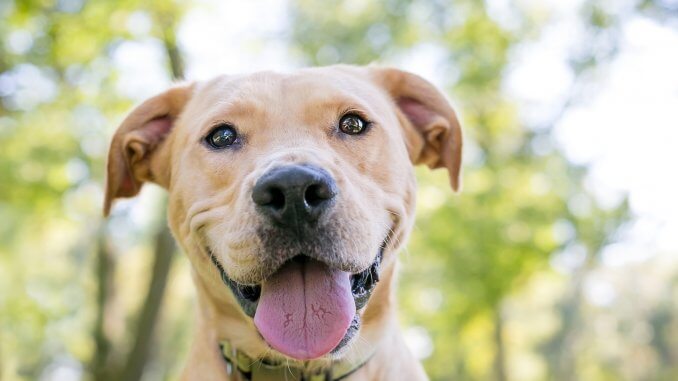
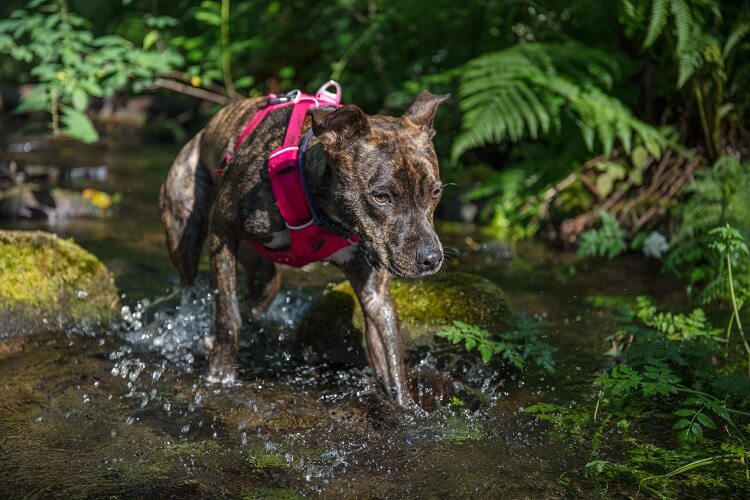
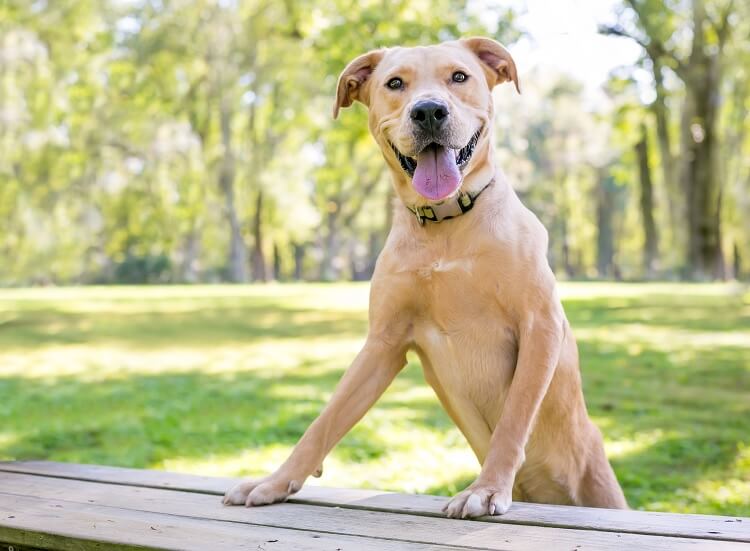
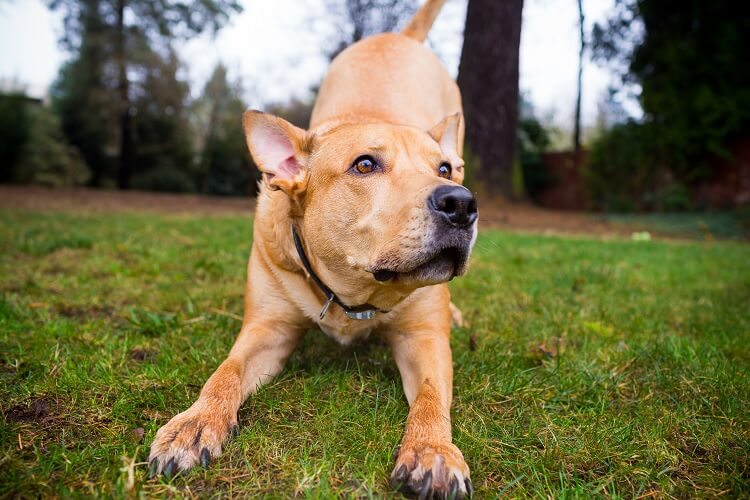
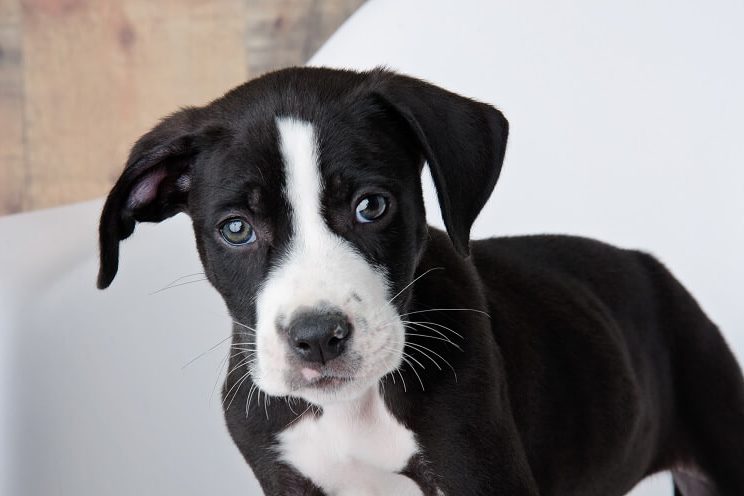
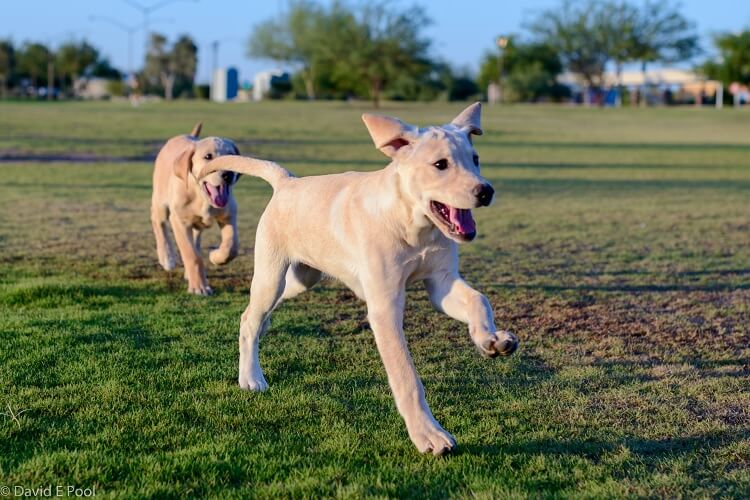
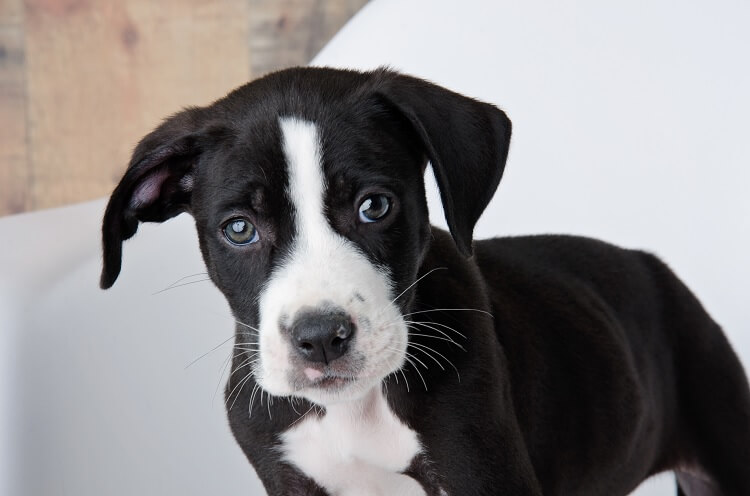
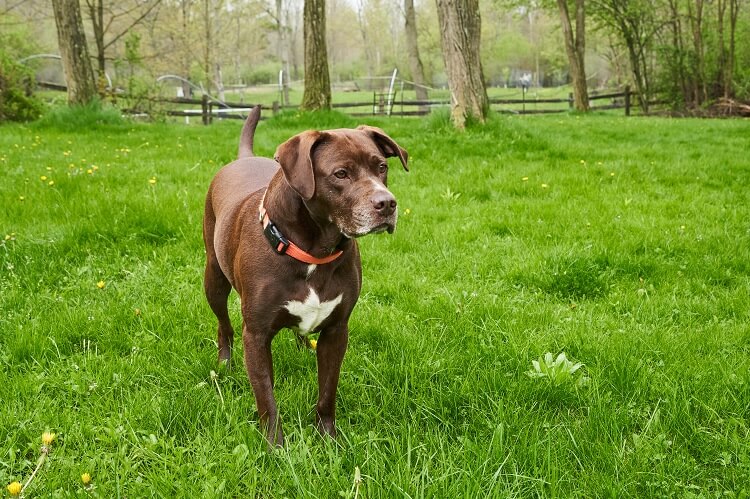

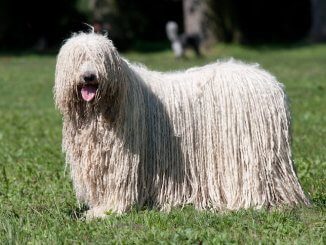
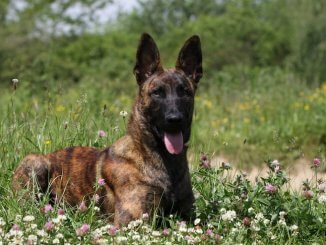
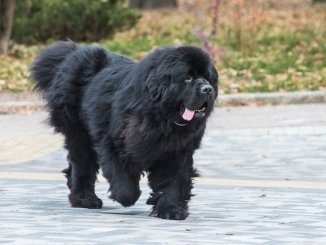
I have a Lab pitbull mix and he is so hyper and fun and likes to get into stuff that he shouldn’t be. He definitely is a cuddler likes to sleep on my head like a head band or in my arms like a baby. His name is MJ and he’s the cutest dog I’ve ever had he’s my first dog I’ve never have owned a dog before and my friends and boyfriend are helping me raise him!
My fiance got me a lab pitbull mix for my birthday hes 8 months old hes the sweetest thing ever. He listens pretty good, still trying to train him but he’s really smart!
My son and I recently rescued a ‘pitbull mix’ and have been trying to figure out the other breed-After reading the various sources and looking at photos I am convinced Oz is a labrabull. I was nervous about adopting a pitbull but he is the sweetest most loving dog I ever met. He does bark at other dogs and pull on the leash so I am looking for a trainer to help with that. Any advice on that subject? There are no children in the home, just two cats that he treats with respect/fear and growing affection. He seems to think that all humans are friends who just don’t know him yet.
Hi Pia, He sounds like a gentle dog. It also sounds like he perhaps missed appropriate socialization before you had him. Is the barking out of excitement or are you concerned he’s stressed? If you are keen to find a trainer, look for force-free practitioners in your local area. To help with leash training, hold treats by your hip, this encourages him to stay close as he’ll want what is on your hip. If he starts pulling, simply stop and lure him back towards you. To tackle the excitement towards other dogs you want to counter-condition his response.
So, start with a dog in the distance and reward him for staying calm. Slowly, move yourselves closer to the dog, reward him for remaining calm. If his emotional state changes, then move away again. This can be a long process, but you want him to understand that calm is the behavior you want, and that’s when he gets rewarded.
Love this! We recently adopted a puppy from the shelter. He was assumed to be lab pit mix. He is amazing! He joined a home with a rescue yellow lab and a rescue golden retriever. I’ve been working from home since we have had him. In a very short time, he was housebroken and sleeps thru the night with his brothers. We have plenty of toys for him which has been successful in not chewing anything inappropriate. He has spent minimal time in a crate – only if no one is home. And he has complete melt downs when in the crate. Tips on this?
We might have a pit mix too. Her fur is full on golden and her head and ears are pit. We are thinking of getting one of those dna tests just for our furbabies 💕
I also have one of these breeds. His name is Brutus black with a white chest he’s about 4 years old had him about a year he’s my best friend. He loves his mama and can be very protective of me at times. I love this breed good combination of dog breeds his mama was a blue pit and his daddy was a black lab the previous owner of his parents didn’t intend for them to breed but they did.
My husband and I just rescued an assumed to be Lab Pit Mix. We got him at 10 weeks, he is now 15 weeks. We are trying to get him to not bite so hard on us when he is playing. We understand he is teething, and we do try and redirect with the many chew toys he has!
We just adopted a pit/lab mix from a rescue. She was shy of 8 months old and we got her as an emotional support dog. Due to her history of being taken then returned several times, she was not trained. In the short time we have had her she learned sit, stay, shake, high five. She has an issue with her kennel so we are still working on this. The biggest issue is her barking and howling when left alone, kennel or not. So that is our next training. I was honored to be able to adopt this sweet girl.
i have a six year old lab/put mix and she is by far the best dog i have ever had. she is so caring to any person she meets, and very protective of her family. and the constant cuddling is a plus <3
We have a Lab / Pitt mix . She is a rescue from the street at 8 weeks old her and her 2 brothers were dumped off on the side of the road last October. She is one of the kindest sweetest puppy ! We are so PROUD to have her! AMAZING GRACE is her name .